Ladders and platforms – proven safety with the right ladder
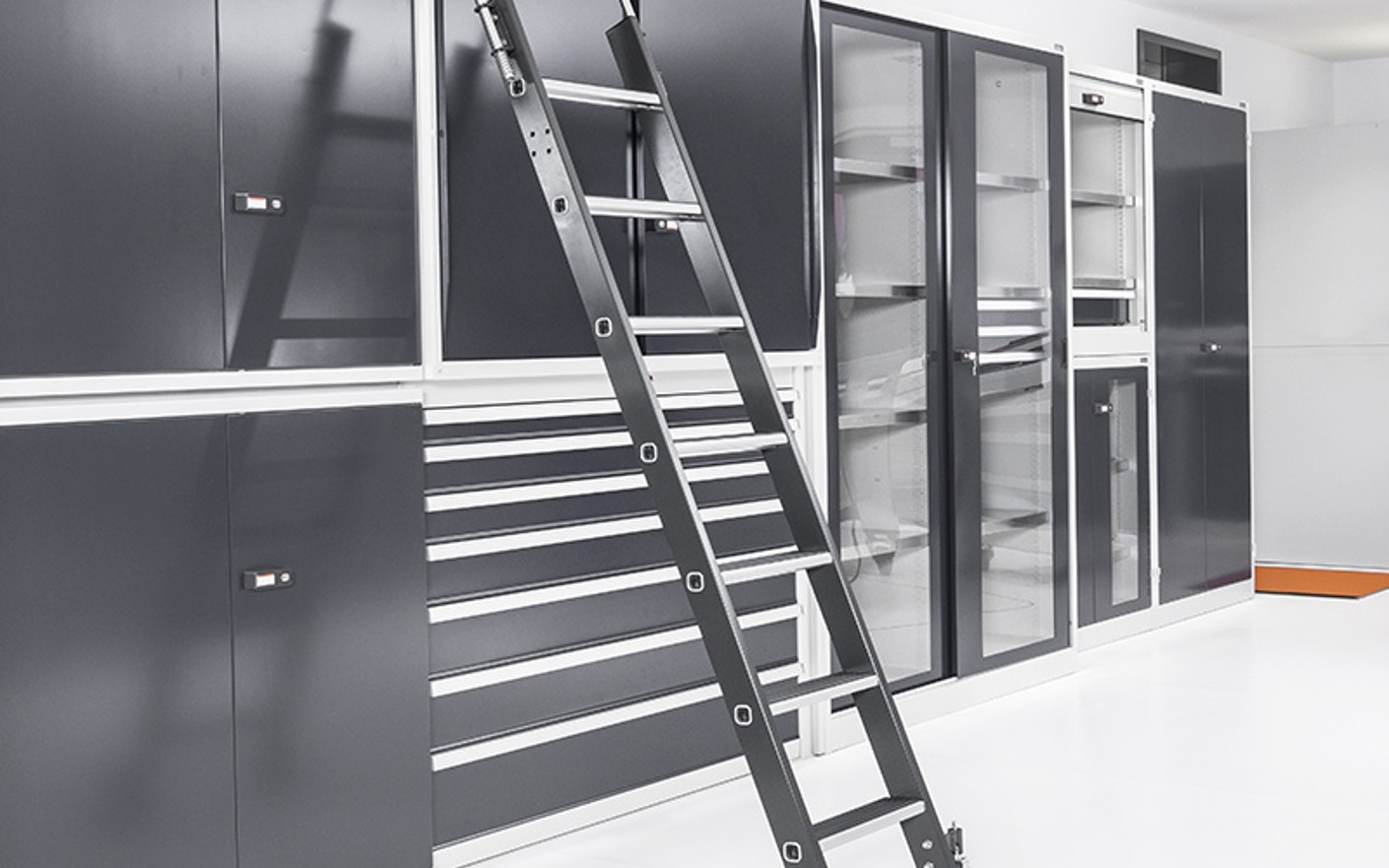
Choosing a ladder or platform involves more than just finding good equipment. It's about finding equipment or tools with proven safety, so you can ascend or descend without any fear of danger. There are a number of standards and regulations when it comes to ladders and platforms. And for good reason, as it considerably minimises the risk of an accident occurring. In this article, we'll introduce you to the most important standards and show you what you need to look out for in a ladder – from simple step stools through to professional ladders.
Directives and DIN standards – requirement for all ladders
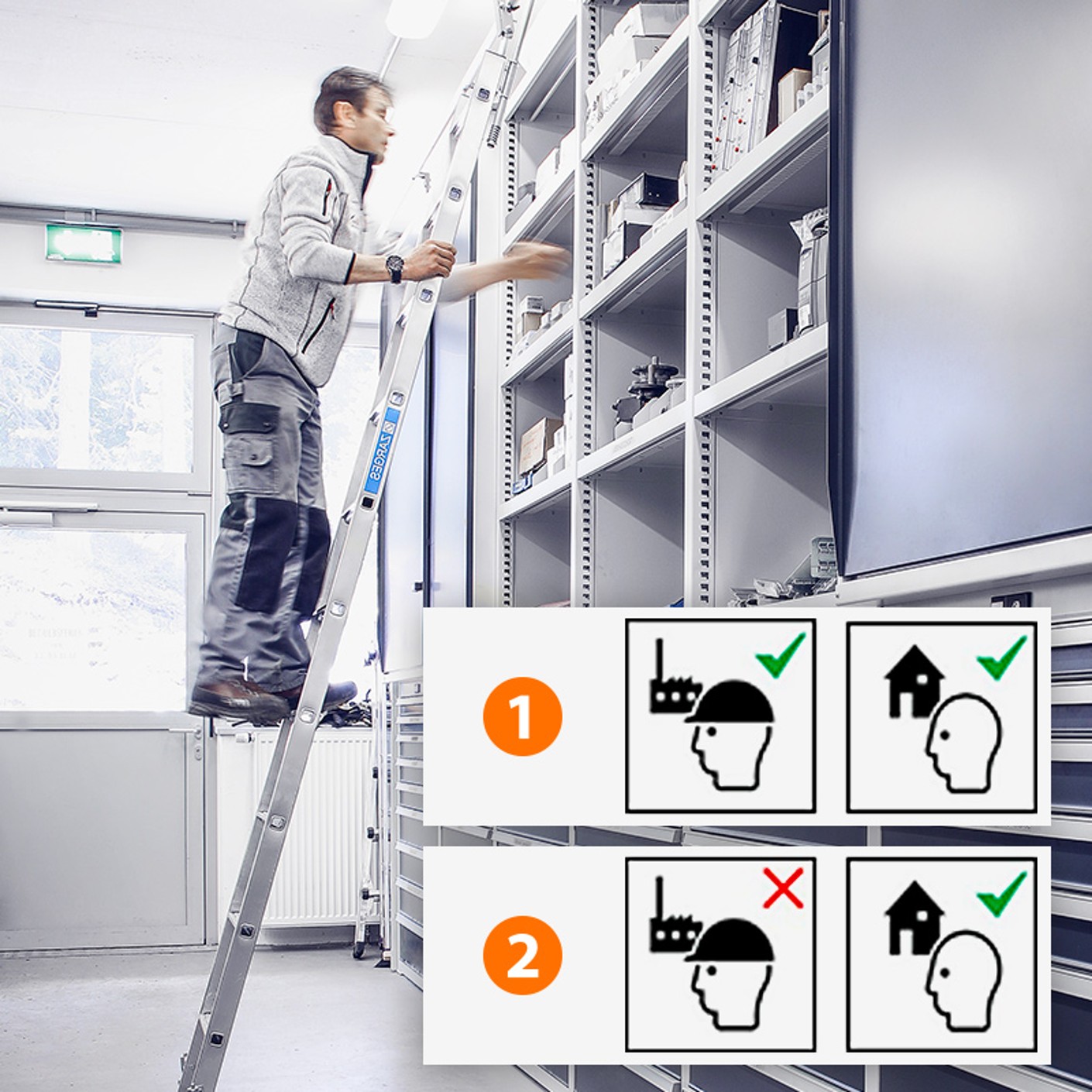
The main standards applicable to ladders and platforms are DIN 131-1 to 131-7, DIN EN 14183 and TRBS 2121 part 2. The particular areas regulated by these standards include designations and designs, functional dimensions, requirements and use, and the necessary testing. They enable features like the stepping area and height to be considered in view of the design. For example, a working platform or platform with steps requires a railing if it is above one metre in height. And with stepladders, the top step is only allowed to be used as a "working platform" if it has a minimum area of 33 x 52 cm.
Furthermore, the DIN standards also regulate safety labelling and user information. The standard that plays a significant role in this regard is DIN EN 131-1/-2, which was modified in January 2018. Since then, ladders have been split into two applicable categories: professional for professional use and non-professional for private use. The reason for this is that a greater strain is placed on ladders and platforms used on a daily basis in a professional capacity. The standard assumes 50,000 cycles in this regard, whereas in a private capacity it is estimated to be 10,000 cycles. Ladders designed for professional use have to meet considerably higher testing requirements. For example, ladders that are 3 metres or longer have to have a wider support base (by having a fixed cross beam or a conical design). Whether a ladder is allowed to be used in a private (1) or professional capacity (2) is usually apparent from pictograms.
Changes implemented in TRBS 2121 part 2:
The TRBS (Technical Rules for Operating Safety) and knowledge of the German Ordinance on Industrial Safety and Health define more precisely the respective obligations on the use of equipment. Employers have to take these into consideration when putting safety measures in place. TRBS 2121 part 2 applies to employers and those working for them. It differentiates between ladders as a traffic route and ladders for working at a height. Here we give you an overview of the most significant changes implemented in TRBS 2121 part 2:
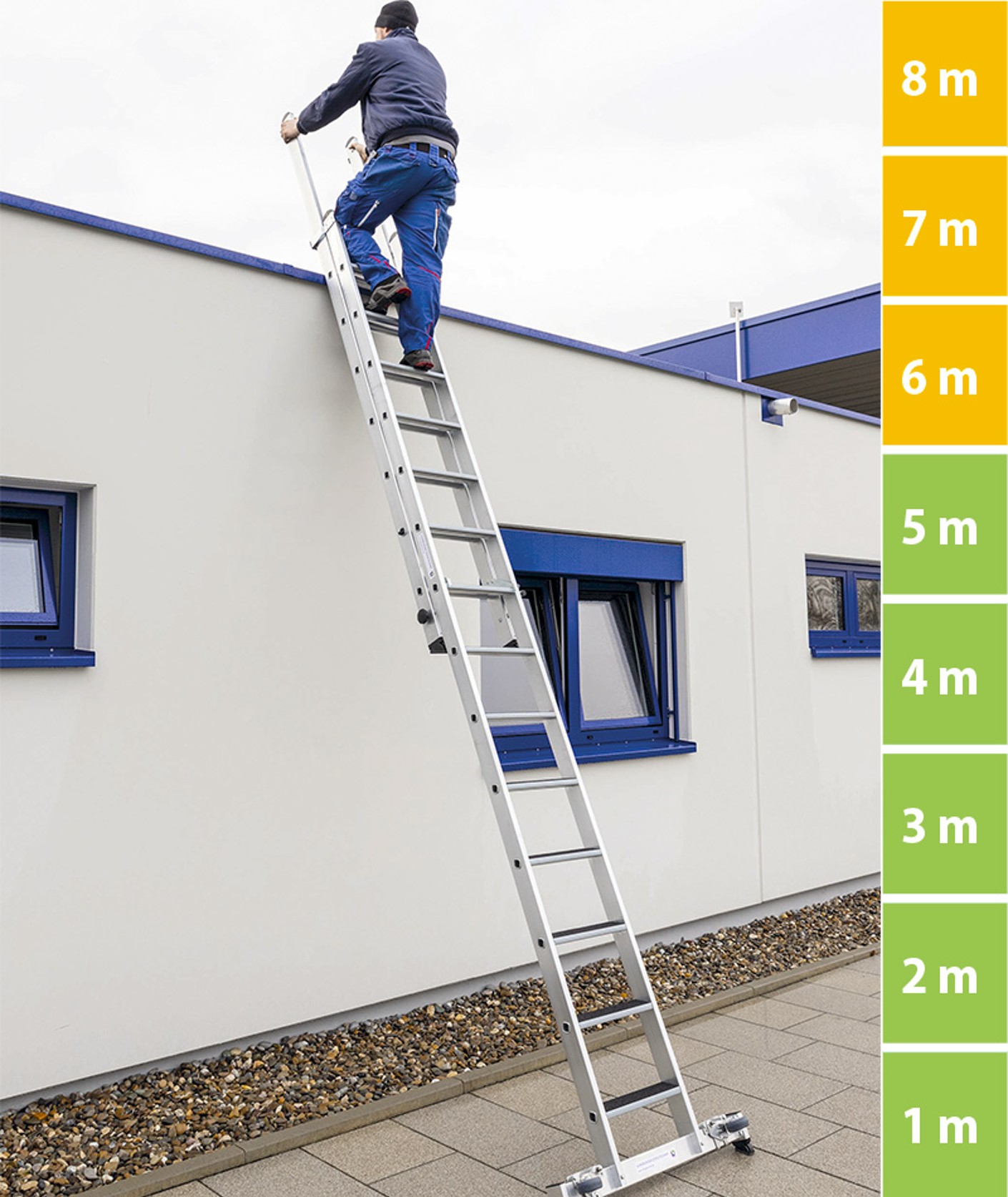
Ladders as a traffic route
6 to 8 metres: restricted use
Ladders are permissible only if used seldom. If used more frequently: select an alternative, such as a fixed ladder, staircase, etc.
1 to 5 metres: unrestricted use
It is permissible to use rung ladders and stepladders up to 5 m in height as traffic routes if the use of other safety equipment is not commensurate. It must be possible to access and exit a working place at height safely (risk assessment).
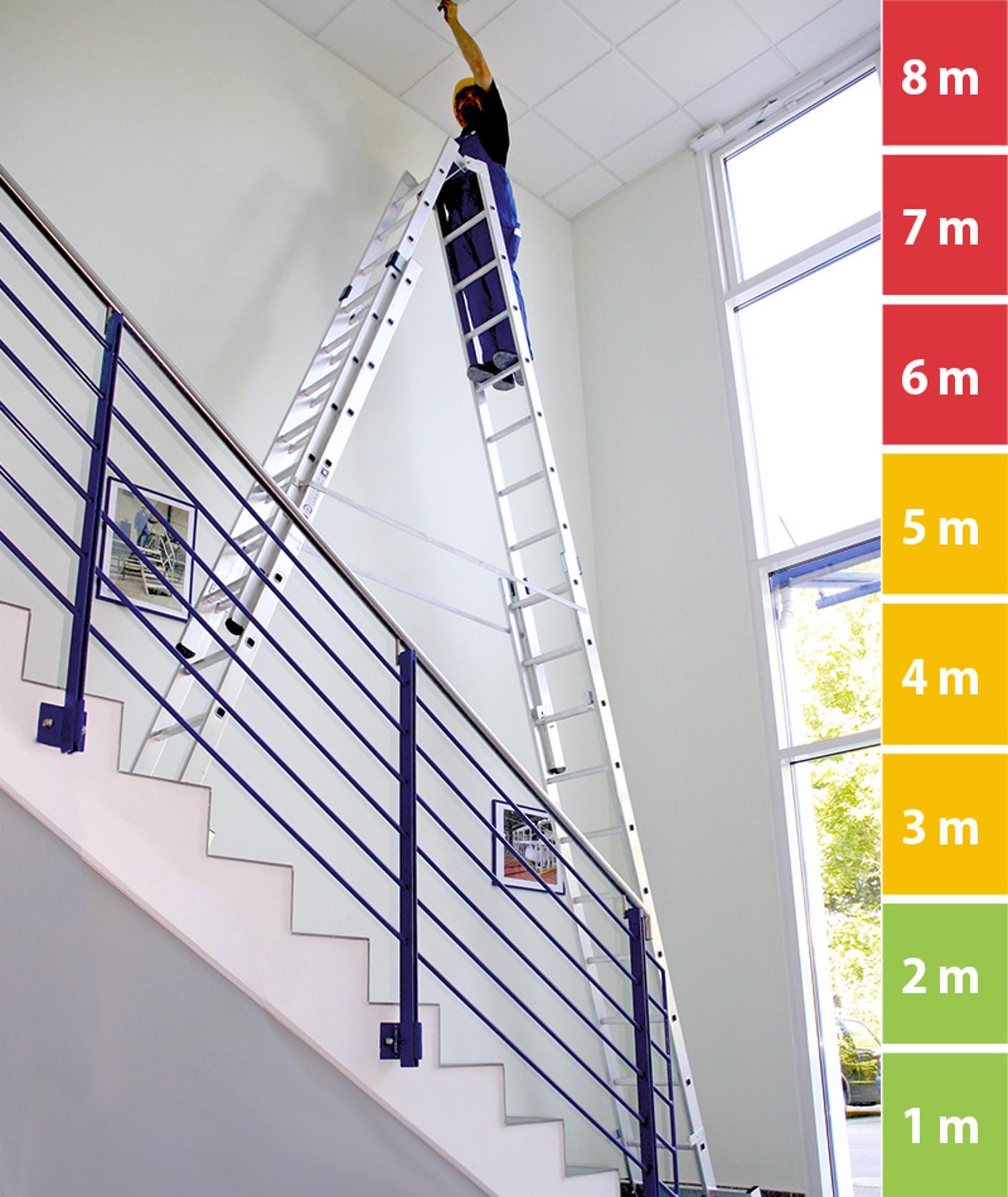
Ladders for working at height
6 to 8 metres: not to be used
Ladder not permissible. Select an alternative, such as a working platform, scaffolding, etc.
3 to 5 metres: restricted use
Ladders with steps or platforms are permissible subject to time limits. Max. usage duration: 2 hours
1 to 2 metres: unrestricted use
Ladders with steps, a ladder platform insert or a platform are permissible. No time limit.
Whenever ladders are also used as workplaces, the revised TRBS 2121 part 2 explicitly stipulates that these have steps not rungs – irrespective of the type of ladder concerned. Alternatively, rung ladders may be fitted with suitable ladder platform inserts or tread inserts. This is a quick low-cost option that allows existing ladders to be used in conformity with TRBS.
Selecting the right ladder length and scaffolding height
The EU directive 2009/104/EC stipulates that anyone using a ladder has to be able to stand securely and hold on safely at all times. In Germany this directive has been transposed into the BetrSichV. When selecting the size/length of a ladder, you should bear the following in mind:
- Lean-to ladders may only be climbed up to the fourth step/rung from the top.
- Stepladders that are accessible from both sides may only be climbed up to the third step/rung from the top.
- Multi-purpose ladders in the position "stepladder with attached extension ladder" may only be climbed up to the fifth rung from the top.
- When selecting a stepladder with a platform or platform ladder, the user must be able to reach the maximum required working height from the platform without having to stretch.
- A useful method for determining the correct inclination angle is the elbow method. To do so, stand upright by the first step of the erected ladder, angle your arm and stretch it towards the ladder. If your elbow is in line with the steps, the inclination angle is correct.
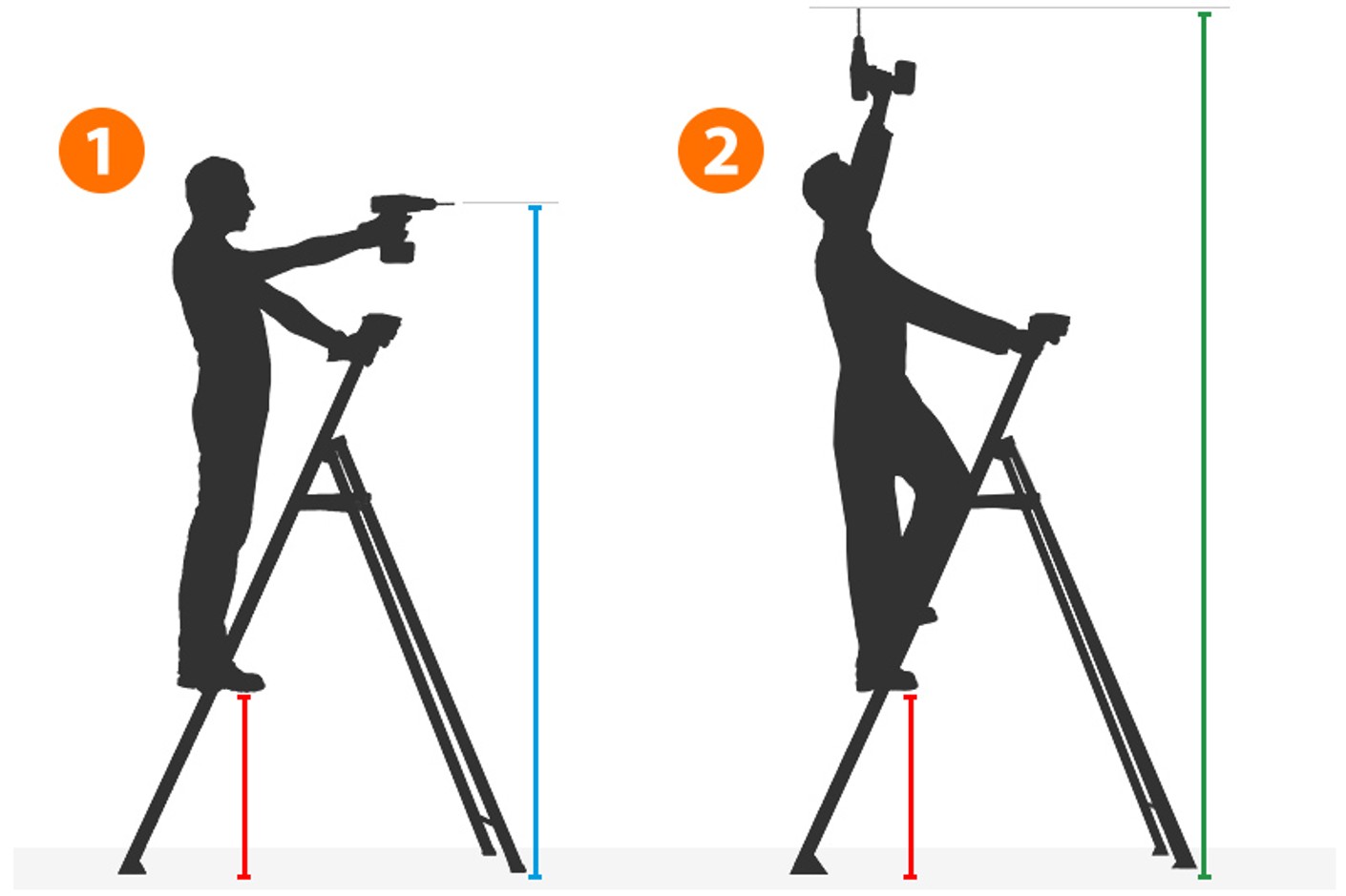
Selecting the correct ladder depends on the required working height:
- Working height= standing height + 1.50 m
- Reach height= standing height + 2.,00 m
Reach height = green
Working height = blue
Standing height = red
Calculating the ladder length
Minimum required ladder length (in m) with following angle

Example calculation of minimum ladder length:
Vertical height (top contact point) = 6.00 m
When using a rung ladder (70° inclination angle): 6.00 m x 1.064 = 6.40 m
Do not use without carrying out regular inspections
To ensure that a ladder meets all of the regulations over the long term as well, inspections need to be carried out. A suitable qualified person in the company has to test the ladders, document the results and apply inspection stickers at regular intervals. As well as a simple visual and functional check, the following criteria and functional tests are applicable:
- Stile strength
- Base stabiliser
- Torsion test (for stepladders and lean-to ladders)
- Continuous stress test
- Base slip test
The frequency of the inspections depends in particular on the frequency of use, the amount of stress on the ladder when in use, as well as the frequency and severity of any defects identified in preceding inspections. In addition to the directives mentioned above, the company must observe the following statutes and provisions when inspecting ladders:
- The German Occupational Health and Safety Act (ArbSchG)
- The German Ordinance on Industrial Safety and Health (BetrSichV)
- The German Social Accident Insurance information 208-016
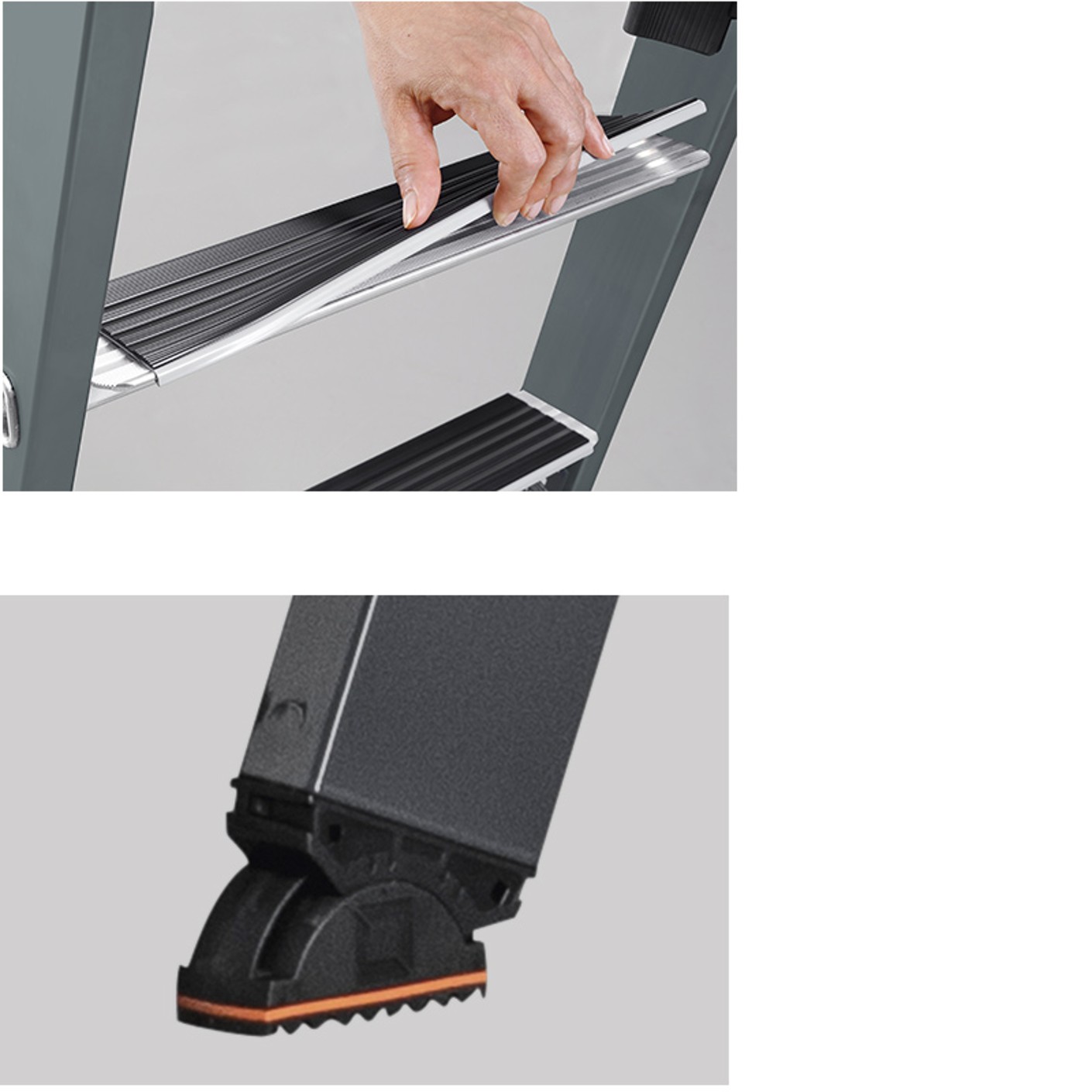
Substandard ladders – how looks can be deceiving
When comparing ladders, people often stop at the number of steps or the weight. But neither are very good measures for determining quality, as the distance between the rungs can differ quite considerably. More rungs do not necessarily always mean more height. An ergonomic rung distance is 280 mm – anything less than this makes climbing up and down more awkward. The importance of width is also often underestimated. A ladder should be at least 350 mm wide, as this makes it stable when standing and means it doesn't restrict freedom of movement when working.
The workmanship of ladders and platforms also plays a significant role. Substandard multi-part ladders have a larger overlap to compensate for the weakness of the stiles – at the expense of length. Rivets or simple welding point towards limited durability. High-quality ladders are designed with fittings and screws, so that you can exchange parts. Plastic caps on the ends should be tightly screwed on, so that they don't get lost in transit or even compromise stability.
Caution is also advised with especially light-weight ladders, as a reduction in weight can come at the expense of stability. And not all that glitters is gold: attractively glistening aluminium is often drawn aluminium, which is considerably less durable.
What types of ladders and platforms are there?
Ladders usually fall into the following categories:
In addition to ladders and platforms, workstations and storage also include workstation systems tool cabinets, tool issuing systems, roller cabinets, tool trolleys, storage technology, environmental technology and room systems and containers. Find out more about the topics of ergonomics at the work place and the 5S method here. This takes you to the overview.

Specialist consultation on ladders and platforms
Our specialist workstations and storage advisers will be happy to offer you advice on the perfect ladder for your needs. If your questions concern both ladders and platforms and fall protection, we will draw on the expertise of competent advisers for personal protective equipment, if required. Our experts will assist you either in person, on the phone or via e-mail.
Choosing the right workstations and storage equipment is a complex task. Find out everything you need to know on our overview page.



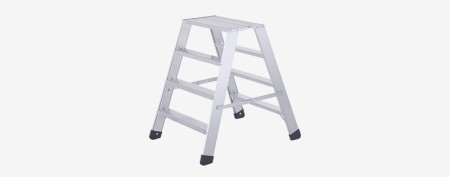

 Request personal consultation
Request personal consultation